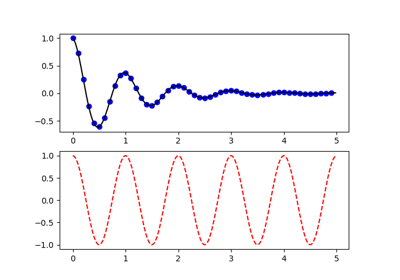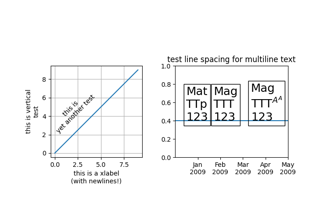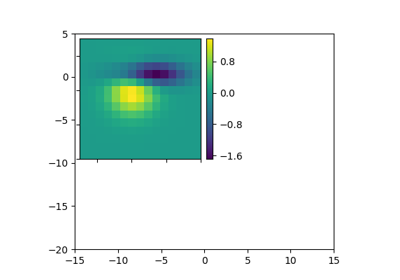
So what is the correct, current way to set colorbar limits so that the scale goes from 0 to 5 when the data only goes from 0.15 to 4. I can format the imshow-images to proper plots itself, because every single one of them needs its own colorbar, a modified axis and the other axis removed. Two of them are usual line-plots, two of them imshow-images. I want to have a figure consisting of, let's say, four subplots. However, when I use a loop to plot the subplots and call a colorbar outside of the loop, it only uses the range of values from the last subplot. Multiple imshow-subplots, each with colorbar.

Thus, the colorbar should encompass the entire range of the values in every subplot. I am very confused because the vast majority of posts etc predate matplotlib 3.1 and sadly I don't have enough under-the-hood experience to understand what the reference I would like to plot them using pyplot.scatter, and use one single colorbar for the entire plot. One other post suggested doing colour_clim(0,5)īut that did not work.
#PYPLOT SUBPLOT COLORBAR CODE#
I use the following code for it import matplotlib.pyplot as plt from mplto. The set_clim function was deprecated in Matplotlib 3.1 and will be removed in 3.3. I use the following code to generate side-by-size images and I need to add colorbar only to the second image in the row. index can also be a two-tuple specifying the ( first, last) indices (1-based, and including last) of the subplot, e.g., fig.addsubplot (3, 1, (1, 2)) makes a subplot that spans the upper. index starts at 1 in the upper left corner and increases to the right. Year_axis_values,monthly_concentration_array,levels=40,cmap='rainbow') The subplot will take the index position on a grid with nrows rows and ncols columns. See the code below for an example: import matplotlib.pyplot as plt import numpy as np fig, axes plt.subplots(nrows2, ncols3, figsize(8.5, 5)) for ax in axes.flat: ax.setaxisoff() im ax.imshow(np.random.random( (16, 16)), cmap. Year_axis_values=master_yearly_df.index.to_numpy() Matplotlib also offers method which can adjust the existing axes and make room for a colorbar implicitly. Monthly_concentration_array=master_yearly_df.to_numpy()

Here is the code snippet: from numpy import * What I want is to have the colorbar limits go from 0 to some max value (logically the first rounded integer beyond z_max). Note the oddball limits in the colorbar which are mapped to the limits of the z-value. You can then delete the unneeded cax for the second subplot: import matplotlib.pyplot as plt import numpy as np x np.linspace (0, 10, num100) y x 2. Instead of using the divider, generate four subplots with different widths using gridspeckw. Except as noted, function signatures and return values are the same for. contour and contourf draw contour lines and filled contours, respectively.

I have a dataset which plots concentration as the z-value. You can account for the needed with of the colorbar already when you create the subplots. Call signature: contourf( X, Y, Z, levels, kwargs) Copy to clipboard.


 0 kommentar(er)
0 kommentar(er)
